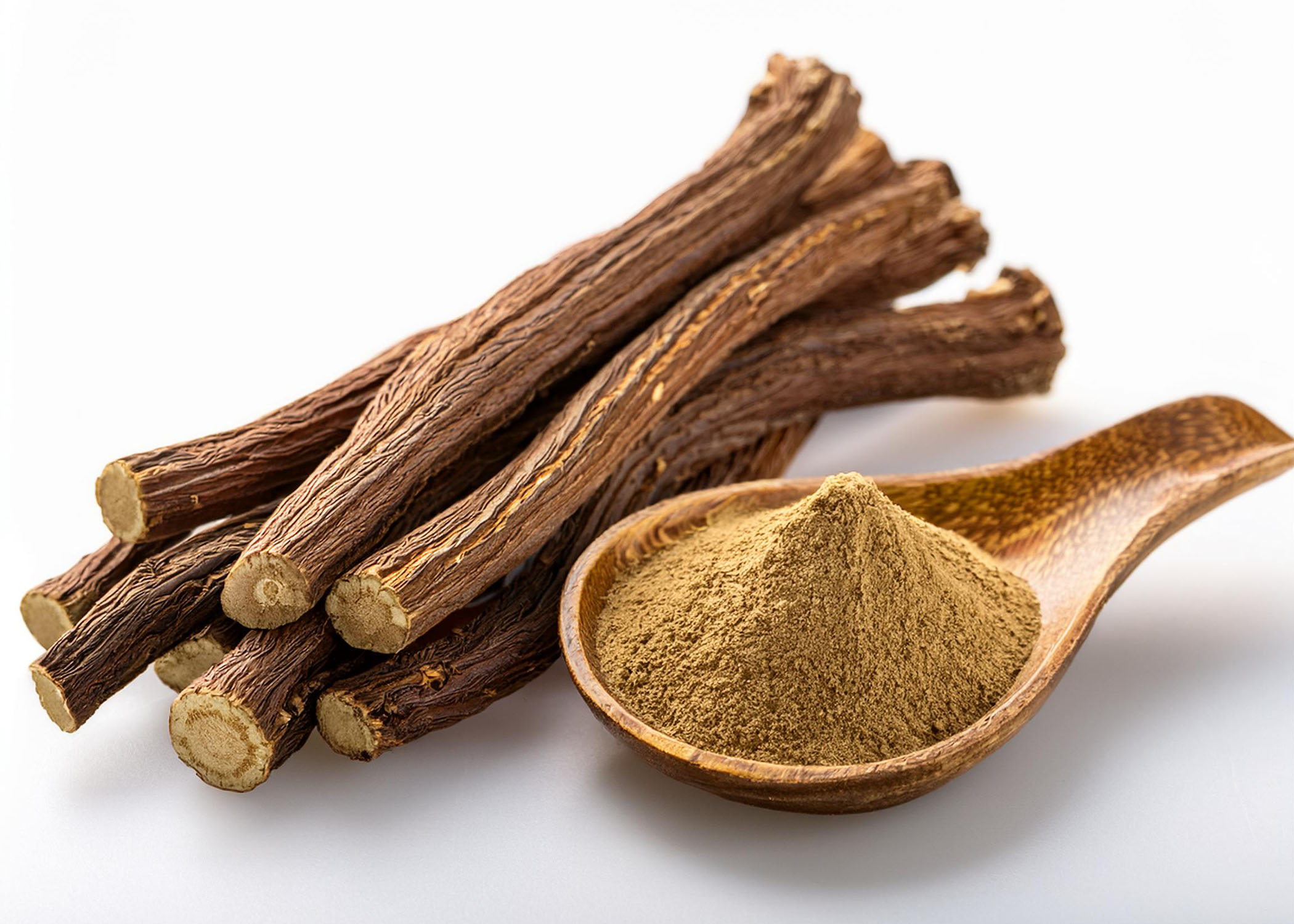Botanical Name: Glycyrrhiza glabra
Licorice root is an aromatic and sweet-tasting spice widely used in both culinary and medicinal applications. Known for its distinctive sweet flavor, which is up to 50 times sweeter than sugar due to the presence of glycyrrhizin, licorice root adds a unique depth to dishes and herbal remedies. While often associated with candies and confections, its uses go far beyond, making it a valuable ingredient in various global cuisines and holistic health traditions.
Licorice root has a complex flavor profile—sweet with a slightly bitter and earthy undertone. Its sweetness is more mellow and nuanced than refined sugar, making it a popular ingredient in desserts, teas, and certain savory dishes. In European and Middle Eastern cuisines, licorice root is used to flavor candies, baked goods, and syrups. Its deep, sweet flavor pairs well with ingredients like anise, fennel, and cinnamon, creating a warming and aromatic blend.
In beverages, licorice root is commonly used to sweeten herbal teas and tisanes without the need for added sugar. It can also be combined with other spices and herbs to create refreshing and healthful drinks. For example, licorice root is a key ingredient in various traditional Chinese and Ayurvedic tea blends, known for its ability to soothe the throat and support the respiratory system. Its natural sweetness and healing properties make it a popular choice in herbal medicine to balance stronger, more bitter ingredients.
However, licorice root spice should be consumed in moderation due to its active compound, glycyrrhizin, which can cause side effects like high blood pressure and potassium imbalances when consumed in large quantities. To avoid these risks, many opt for deglycyrrhizinated licorice (DGL), which removes the glycyrrhizin while maintaining the beneficial properties of the spice.

